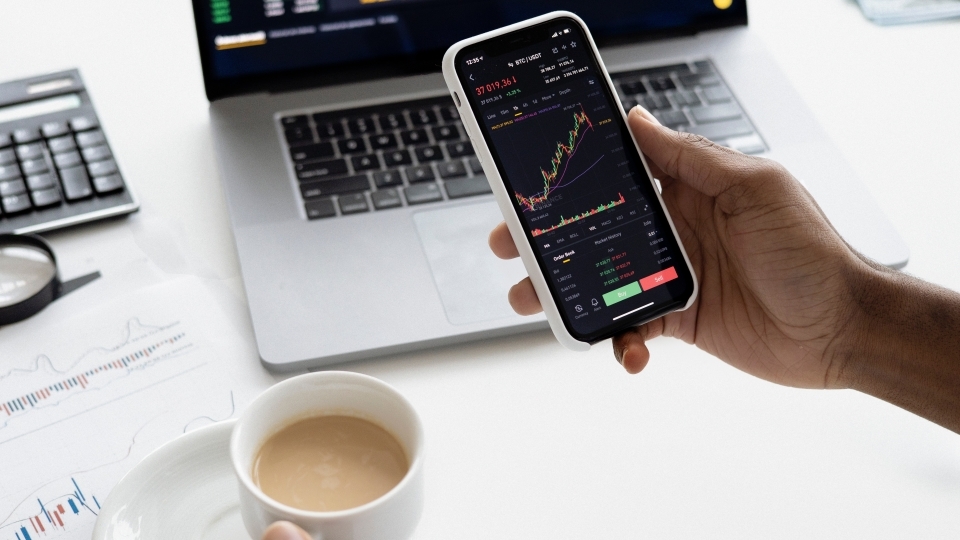Inflation Ticked Down, but More Pain in the Forecast as Fed Stamps Out Price Increases
August 16, 2022
- Author
- Jay Pfeifer

In a December Q&A, Economics Professor Vikram Kumar noted that inflation is only transitory, until it’s not. Eight months later, inflation is not only not transitory, it has proven to be quite stubborn.
Prices are up across the board over the past 12 months despite the Federal Reserve hiking interest rates four times just this year.
Kumar spoke shortly after the release of the July 2022 inflation numbers which showed an 8.5% increase in prices year-over-year, down from 9.1% in June.
What you need to know:
- There was a welcome reduction in inflation numbers in July–but they deserve only modest applause. The reduction was largely due to a decline in gas and energy prices.
- Core inflation remains above 5%; significantly higher than the Federal Reserve’s average target of 2%.
- Slowing inflation remains a significant challenge that will require sustained intervention from the Federal Reserve.
- The Inflation Reduction Act is mis-named; it will likely have a negligible impact on inflation, if it has any impact at all.
The July numbers show a slight slowdown in inflation. How are you feeling about the most recent report?
It's good, but we should not give it three cheers. I think one cheer is fine.
All those numbers need to be treated with some caution. Most of the reduction in the inflation rate has come from reductions in gasoline and natural gas. The energy component is down a little bit, but all the other major components are pretty strongly positive.
What worries me a lot is the underlying, or the core, inflation rate. If you get rid of some of the volatile elements like energy and food, that reduces the inflation number by about three percentage points.
So it seems that about 5% or so is built into the system now. Various sticky-price, median, trimmed-mean and cyclical core price indices indicate this. That is not going to go away just by itself even if the supply-side of things moderates. That's where I think the challenge is
So how do you think the Fed might get inflation under control?
The Fed has increased the policy interest rate four times this year so far, and it will need to do more of the same. The Fed’s credibility more or less requires the Fed to do what it takes to anchor prices.
The U.S. economy might be in for a period of some pain. Historically speaking, reducing the inflation rate by one percentage point has required anywhere from two to five percentage points of additional unemployment. Economists call this the “sacrifice ratio.”
So if you want inflation to go down from 5% to 2%, which is the Fed’s average inflation target, you might need to have unemployment at 6% for the next two or three years. Of course, the future is never a direct projection of the past.
How does the labor market, which is now back at pre-pandemic numbers, connect to inflation?
It is an interesting time because the traditional relationship between the goods market and the labor market has become a bit distorted by the pandemic. That's something the Fed will have to try to understand better.
The thing that worries me is the way the wage-price dynamic contributes to inflation.
The last jobs report was extremely strong and wages also grew strongly. Average hourly earnings were up approximately 5%. That's the type of cost increase that feeds into price hikes. Firms are able to sell at a higher price so they want to hire more workers. And the only way they can hire more workers is to pay them a higher wage. So they pay a higher wage and then they're able to pass it on in higher prices. There's no end to that loop unless something is done to shrink demand.
That's where the Fed has to come in and say, “Okay, the party ends now.”
Does the strong jobs report show that the Fed’s big interest rate increases haven’t yet taken hold?
It tells me the Fed has a long way to go. Those big increases in interest rates obviously haven’t hurt employment. However, we are seeing some impact in job vacancies, which would mean companies are slowing hiring plans. So far, we don’t see job losses but we do see vacancies dropping—a downward shift of the Beveridge curve. This gives the Fed more room to tighten its policy screws without facing political pushback. In any event, any action the Fed takes now will have its maximum effect on the real economy several quarters hence due to well-known policy lags.
There is another interesting trend: U.S. GDP declined in real terms over the last two quarters even as employment has kept rising.
We are seeing negative GDP growth—falling output—with rising employment. That means a decline in labor productivity–more workers are producing less. And that decline makes inflation control more difficult. If workers are less productive, you have to hire more workers to produce a given amount of output. So it's more costly to produce if your resources are less effective.
Even though it hasn’t been signed into law, do you think the Inflation Reduction Act will help control inflation?
Unfortunately, I don’t. It's a terribly misnamed piece of legislation that is probably better called the Inflation Irrelevance Act! The Congressional Budget Office has done some scoring and they basically said that the rate of inflation is going to be changed imperceptibly —like one 10th of a percentage point, down or up.
I think the bill will have its biggest impacts in the long run through its subsidies and tax credits for renewables, carbon capture and other climate goals as well as ACA subsidies. But its effect on inflation will be small.



